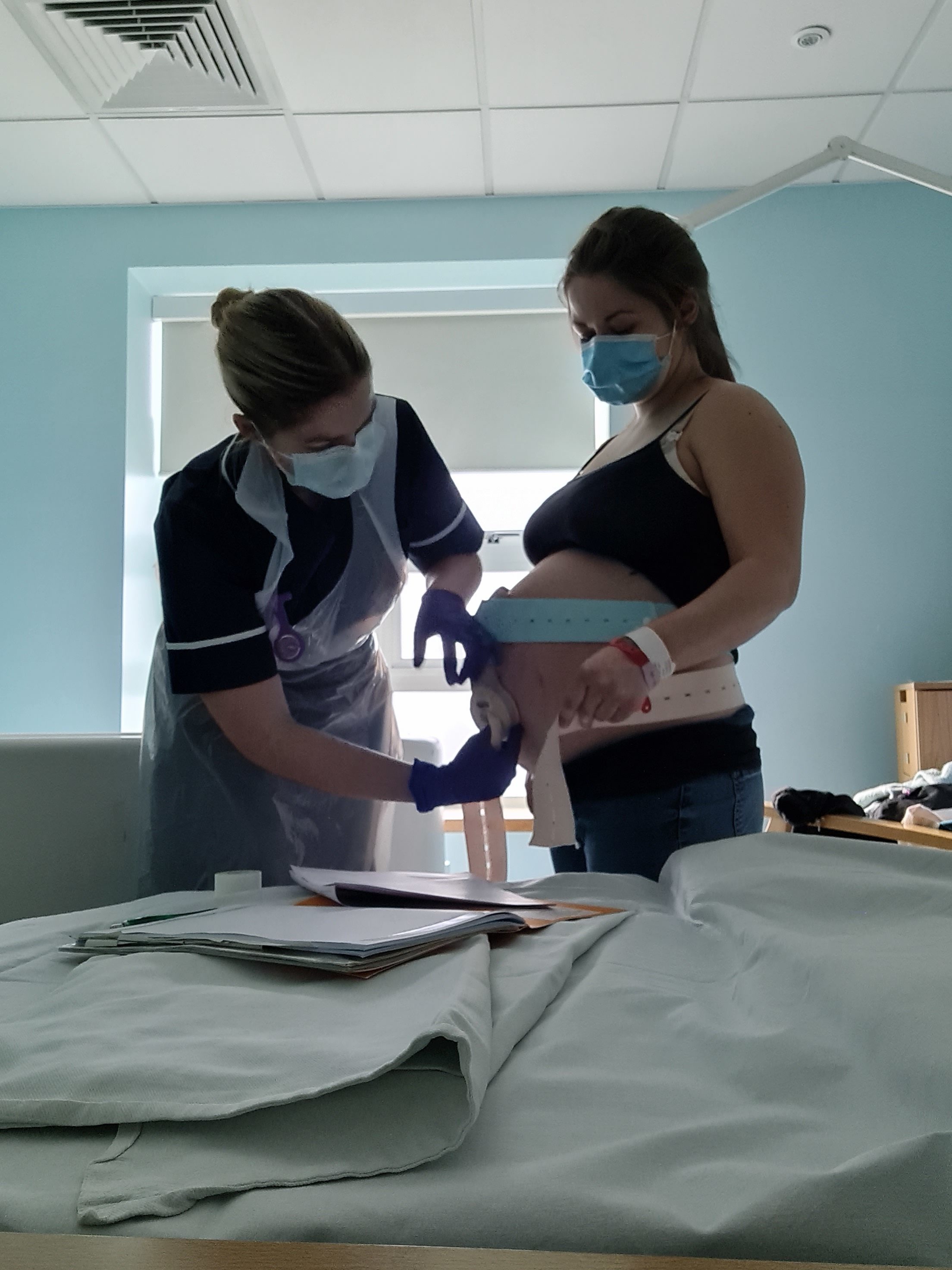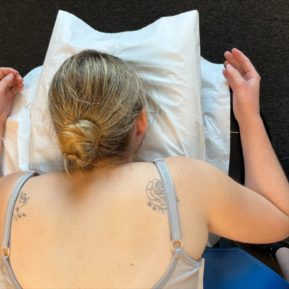There are risks and benefits with everything we do in life, and vaginal birth carries benefits as well as risks. In the UK thanks to our human rights laws, thanks to Birthrights campaigning over the years and the NICE guidelines everything you do during pregnancy, labour and birth is your choice. It is your birth, your body and your baby and it is about making choices which are right for you.
What are the benefits of vaginal birth?
1. Quicker recovery time when compared to caesarean birth. This depends on any additional complexities or complications during birth, but most women can resume most activities like lifting, bending and mobilising with little to no concerns.
2. Can drive when feel comfortable or 12-24 hours after the anaesthesia
3. If you have laboured before, subsequent labours are more likely to be quick
4. Lower chance of future pregnancy complications and endometriosis
5. Improved microbiome and gut friendly bacteria for your baby lowering the chance of obesity, asthma, eczema and allergies.
6. Lower chance of neonatal admission to the neonatal unit after 37 weeks, when compared to all other birth types (planned caesarean follows next, followed by instrumental and unplanned caesarean birth)
7. Milk supply transitions slightly earlier around day 2-3 from colostrum. Women who have a spontaneous vaginal birth often find starting a breastfeeding journey starts easier (due to a multitude of factors from mobility, immediate skin to skin and blood loss)
8. Can be empowering and a positive experience for women’s wellbeing which can lower the chance of postnatal depression and improve attachment and confidence in parenting (this is about a positive birth experience in general however this looks for the person)
9. Can have choice of place of birth, what happens in birth and support
10. Have shorter hospital stays
11. Lower chance of Readmission and lower chance of infection
12. Less need for pain relief in the postnatal period
What are the risks of vaginal birth?
These are based on generic statistics and figures with women in general, and I have explained where there are risk factors where statistics will vary due to these risk factors. This does not explore previous caesarean birth, but you can check these out on my Instagram page.
1. Perineal tears (85% will sustain a vaginal tear from grazing, not requiring suturing to deeper requiring suturing). Being in an upright position to birth, not in lithotomy, having a warm compress, antenatal perineal massage and breathing at the time of the head crowning lowers the chance of tearing. In addition there is research on pwrineal devices which can further lower your chances of tearing and reduce the chance of an instrumental birth and lower the length of the pushing stage. A second degree tear or an episiotomy (surgical cut made to speed up the birth, usually for a long pushing stage or fetal heart rate concerns and only performed with your consent) will be advised to have stitches. Stitches can aid healing, alignment and reduce bleeding, are dissolvable but do carry risks of infection so good follow up care and hygiene should be used.
2. A 21% chance of urinary incontinence. One of the most common problems after any birth is urinary incontinence which can affect around 21% of women after a spontaneous vaginal birth or up to 36% after a forceps birth (this can be variable depending on the type of forceps birth, size and position of baby). A prolonged active pushing stage can increase the chance of pelvic floor incontinence, and reasons why 1) involuntary pushing and allowing the fetal ejection reflex or the uterine muscles to birth the baby is recommended wherever possible and 2) why the second stage is often recommended to be limited time wise from the point of active pushing commencing.
A caesarean birth does not eradicate pelvic floor incontinence but it does lower the chance when compared to vaginal birth with studies estimating around 13% of women having a caesarean birth having stress incontinence (Bloomquist, 2018. Rortveit et al, 2003). There would need to be 17 caesarean births to reduce the chance of 1 person having urinary incontinence
3. 1 in 4-5 chance of a caesarean birth
4. 1 in 5 chance of instrumental birth in first time births and 1 in 10 chance of instrumental birth in subsequent births. Instrumental births are forceps and ventouse births which are most commonly used with maternal consent for a long pushing stage, baby being in a non optimal position and not rotating or descending or fetal heart rate concerns. Sometimes they can be recommended for other medical or pregnancy reasons too.
5. Severe perineal tears affect 1:25-33 women (3-4%) of all first time vaginal births and 1-2:100 (1-2%) of subsequent births. These statistics are lower in spontaneous vaginal birth and higher in ventouse and forceps births at around an increased 5-15% chance. An episiotomy will be recommended in instrumental births to try to direct any tearing away from the anal margin and to try to reduce this risk (although an episiotomy can still sometimes lead to a 3rd or 4th degree tear). Third degree tears which only involve some of the anal muscle fibres (categorised as a, b or c) are the most common proportion of this statistic, and there is no data available between the different categories for risks. A fourth degree tear involves tearing through the whole of the anus and is the significant, but the rarest out of all of the types of tearing. A third or fourth degree tear is sutured in theatre with antibiotics and laxatives prescribed and follow up physiotherapy. Many will heal with no long term problems, but the risk is flatulence and bowel incontinence in the long term.
6. Need for emergency caesarean birth in a first vaginal birth is 1 in 4 women in the UK. This is a much lower chance in subsequent births.
7. Rate of induction is between 1:3-4 women (30-40%) in the UK. This is for a variety of reasons and induction comes with its own risks and benefits. Induction requires consent.
8. 4 in 100 women with have a postpartum haemorrhage with spontaneous vaginal birth. In contrast this is 18-19:100 with instrumental birth, 8-9:100 with planned caesarean birth and 21:100 with unplanned caesarean birth (Bell, 2020). An active third stage (the injection to help birth the placenta) can reduce this risk, and the risks vary depending on the individual persons previous medical, obstetric and labour history.
9. Need for pain relief in labour. Your choices can be explored in another article.
10. 1-2:100 Manual removal of placenta requiring surgery in theatre to remove
11. Overall a 1:200-900 (0.1-0.6%, referenced by most textbooks as an average 0.5% – 1:200) chance of a cord prolapse in pregnancy (where the cord protrudes through the cervix below the presenting part of the baby). This is not necessarily a risk completely associated with choosing a vaginal birth as it can happen in pregnancy at any stage the waters release if the cord is presenting lower than the head, which may be before labour begins. Risk factors for a cord prolapse include prematurity, congenital abnormalities, twins, a breech baby (bum first, but particularly if the feet rather than the bum is first), a non engaged in the pelvis baby, unstable lie, transverse lie or polyhydramnios. All reasons attending midwife appointments is encouraged at the end of pregnancy (amongst other things) to check the position and engagement of your baby. A cord prolapse in a term head engaged with no risk factors is really low risk at the lower end of the statistics, but still a small risk. This is an emergency and birth by caesarean will be recommended to prevent stillbirth.
12. 1:150-200 (range 0.15-2%, Hill, 2016, average estimate 0.5-0.7%) chance of Shoulder dystocia. This is where the baby’s Shoulder becomes impacted on the bony prominence of the maternal pelvis. This is time critical to birth the baby, with around 85% (4 out of 5 Shoulder dystocias) needing simple position changes to receive the impacted Shoulder. If severely impacted this sometimes requires midwives or doctors releasing the shoulder internally and can lead to damage to the shoulder and arm (less common since PROMPT training of the posterior arm but still a risk), brain damage and in the rarest cases neonatal death. Only 16% of Shoulder dystocias can be predicted and these risk factors include women with diabetes, women with BMI over 30, a macroscomic (baby over 4-4.5kgs) baby, previous Shoulder dystocia, induction of labour, instrumental birth, slow birth of the head, a long labour and a long pushing stage.
13. The chance of birth trauma mentally for the woman, particularly if complications occurred or the woman wasn’t listened to or felt supported at any stage. The can happen in any birth.
14. The chance of an in labour stillbirth or oxygen deprivation leading to disability (around 90% of fetal hypoxia insults and stillbirths happen in pregnancy rather than labour), particularly if there were concerns with fetal heart rate wellbeing (this is around 1 in 670-1000, although the statistics vary year on year and is part of a government initiative to reduce through improved training, recognition, detection, safe staffing, early intervention and escalation in maternity services). Risk factors include babies with reduced growth or IUGR (under the 5th-10th percentile or reducing growth) and often where planned caesarean births or early induction with close fetal monitoring are recommended for the wellbeing of the baby. It is also more likely when women report reduced fetal movements (which is why it is so important to always call your hospital and be checked if you notice a change in movements), where there is reduced liquor volume or concerns with placental function – it is these reasons why prolonged pregnancy over 41 weeks can have a higher stillbirth rate because some of these things are not always diagnosed in the antenatal period, and labouring is more likely after 41 weeks but these babies will be the ones more likely to struggle particularly with a long labour.
It’s also why the recommendation is to have your baby’s heart rate listened to with a handheld doppler or a CTG depending on risk factors, why observations are undertaken regularly and one to one care should be provided throughout established labour to detect any changes early and recommend intervention to reduce these problems.
15. Meconium stained liquor (where the baby poos inside) is common and occurs in around 1:5-6 births. However in rarer cases, around 1-2:1000 births this meconium in labour can lead to meconium aspiration syndrome where the baby breathes in this meconium inside and is admitted to the neonatal unit, requiring intervention and neonatal admission (Fischer, 2012). Risk factors include babies who have infection (called chorioamnionitis), who are diagnosed IUGR (small baby see above), have no or reduced amniotic fluid, are over 42 weeks, maternal smoking, maternal pre eclampsia or substance abuse. There are also links to caesarean birth (both planned and unplanned caesarean birth). If untreated or in the most severe cases this can cause neonatal death. These cases are often included in the same statistics for the each baby counts criteria in number 14.
16. 1:200 chance of infection mum and baby which may need antibiotics or observations after birth. This becomes a higher risk at 1:100 if the waters have been released for over 24 hours. Group b strep is another risk within the infection risk, but will be in a separate article to discuss.
Birth, vaginal birth, antenatal, antenatal class, midwife, midwifery, mum to be, parenting, parent, informed choice, pain relief,

Midwife NHS




Leave a Rating / Review
You must be logged in to post a comment.